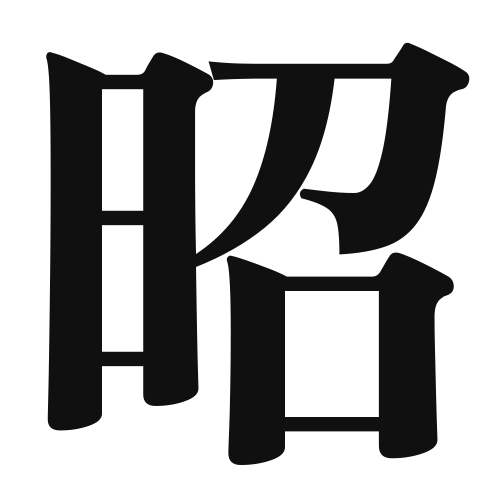1. Overview of Meaning
The kanji “昭” (shō) generally means “bright,” “clear,” or “shining.” It conveys a sense of illumination and clarity, often associated with enlightenment or understanding.
2. Formation and Radical
Formation of the Kanji: The kanji “昭” is a phonetic-ideographic character (形声文字). It combines the meaning of brightness with phonetic elements. The left part, “日” (sun), represents brightness, while the right part, “照” (to shine), contributes to the overall meaning.
Radical: The radical of “昭” is “日,” which is commonly associated with light and sun-related concepts.
3. Examples of Usage
Common Words and Phrases: Some frequently used words that include “昭” are “昭和” (Shōwa, the era from 1926 to 1989 in Japan) and “昭示” (shōji, meaning to indicate or show clearly).
Example Sentences in Daily Conversation:
- 「彼の説明はとても昭和的で、分かりやすかった。」 (His explanation was very clear and easy to understand.)
- 「昭和の時代は日本にとって重要な時期でした。」 (The Shōwa era was an important period for Japan.)
4. Synonyms and Antonyms
Similar Kanji: A similar kanji is “明” (mei), which also means “bright” but can imply clarity in a more general sense, while “昭” specifically emphasizes brightness in a more historical or cultural context.
Antonyms: An antonym of “昭” is “暗” (an), which means “dark” or “dim,” representing the absence of light or clarity.
5. Cultural and Historical Background
Relation to Japanese Culture: The kanji “昭” is often associated with the Shōwa era, a significant period in Japanese history marked by modernization and cultural change. It reflects the brightness of progress and development during that time.
Proverbs and Idioms: One common idiom is “昭然たる” (shōzentaru), meaning “clear and evident,” which emphasizes the importance of clarity and transparency in communication and understanding.
